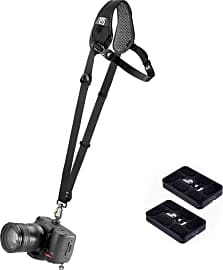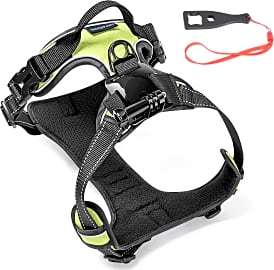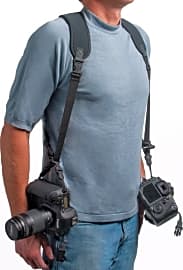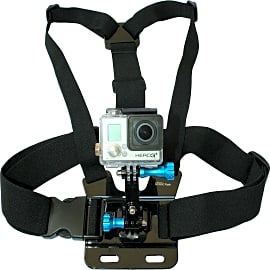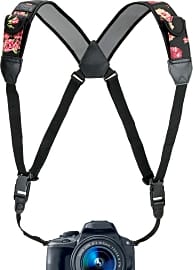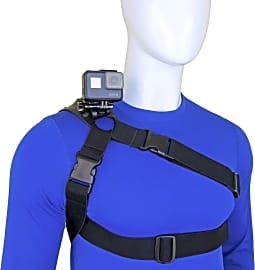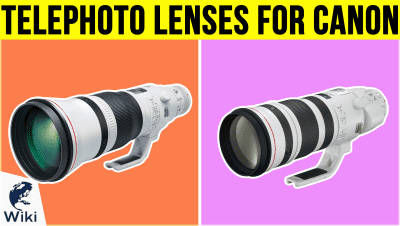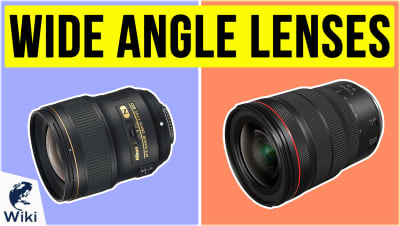The 10 Best Camera Harnesses

This wiki has been updated 37 times since it was first published in October of 2015. Always be ready for the shot, no matter when it comes, with one of these camera harnesses. Whether you are covering a sporting event, a wedding, or breaking news, they will give you quick access to your gear, so you never miss a magical or important moment. We've also included a few models for you action junkies out there, and ranked them all by their comfort, durability, and support. When users buy our independently chosen editorial recommendations, we may earn commissions to help fund the Wiki.
Editor's Notes
December 08, 2020:
Including a versatile range of harness was important to us, since not every photography likes to carry their camera in the same position. Along the same vein, not everyone carries the same type of gear. With that in mind, we wanted to make sure we included something to fit just about every need.
For those who take two cameras along with them, we have the Cotton Carrier G3, BlackRapid Breathe Double Slim, Holdfast Gear Money Maker, and Op/Tech USA Double Sling. Of these, the Cotton Carrier G3 does the best job of keeping your cameras stable as you move around. This is due to the fact that it holds one close to the chest, and the other reasonably tight against the hip. Both secure in place via quick-release, twist-and-lock mounts. That being said, some may find having a large camera hugging against their chest to be a bit cumbersome or awkward. If you prefer them to be hanging down around your hips, the BlackRapid Breathe Double Slim, Holdfast Gear Money Maker, and Op/Tech USA Double Sling are going to be better options. Without a doubt, the Holdfast Gear Money Maker is the most stylish of these, however, it is also the most expensive. On the opposite end of the spectrum is the Op/Tech USA Double Sling, which is the most affordable. That being said, it doesn't feel nearly as strong, so we would caution against it for very heavy cameras with large lenses attached. Despite that, we do think many will appreciate that it converts from a double to a single for those days you are only bringing one camera along.
If you only travel with just one camera, then you can also look to the Cotton Carrier Skout, BlackRapid Breathe Curve, and USA Gear Neoprene. As with the double-camera harnesses, the Cotton Carrier model holds your gear most tightly to your body, which makes it the better choice if you are often prone to intense movements while carrying your equipment. It, along with the BlackRapid Breathe Curve, are designed to be worn crossbody, whereas the USA Gear Neoprene is an X-back style that goes over both shoulders.
For the adrenaline junkies out there, we have included the Nordic Flash Adjustable Chest and Stuntman 360, which are designed to be used with small action cameras. These both feature elastic straps so you can cinch them tight against the body, without feeling like your movement is restricted. The Stuntman 360 is the more versatile of the two because it allows you to mount the camera on your chest or shoulder, whereas the Nordic Flash only allows for chest placement. Also for action cameras, we have the SmilePowo Pet Vest. However, this is for your dog to wear rather than you.
July 02, 2019:
Given its incredible stability and comfort, the Cotton Carrier G3 maintained its spot at number one, while an underrated model by BlackRapid moved all the way up from our ninth position to number two on the strength of its breathable shoulder pad and an under-arm strap that does a great job keeping the length of it from sliding out of place. We also added a very nice model from Think Tank, which boasts an available waist strap that can accommodate a number of additional accessories like small lens bags, cleaning kits, and more. The Op/Tech Double Sling took a step back from 7th to 8th due to its reliance on plastic attachment points, which, while not necessarily cheap, still can't hold a candle to the durability offered by steel. We ended up saying goodbye to the MovoPhoto model from our previous ranking, as well, as it suffered from some availability issues. Among our special honors you'll find a pair of boutique companies devoted to making slim, stylish, and capable models that you can trust to safely carry your gear.
Special Honors
Gunslinger Vintage Shooters looking for a personal touch in their straps will go wild for the incredible variety of designs offered by this brand. The coloring on these is particularly nice, and it'll cost you a pretty penny to get your hands on one, but if you're a pro with a personality, it's a great fit. gunslinger-harness.com
Kinesis H717 Though it may feel a bit bulky, the Kinesis H717 has a lot of soft padding, making it a decent option for anyone who carries heavy gear or who finds other straps dig in to their skin too much. It is available with various accessories to make it better suit your needs, including a belt, a monopod holster pouch, and more. kgear.eogear.com
Why You Need A Good Camera Harness
Traditional camera straps simply dangle the thing around your neck, and however you choose to employ them they usually leave your expensive gear swinging in the wind.
If you’re an avid photographer, you know how difficult it can be to keep your camera still when you need to use your hands for other things. Traditional camera straps simply dangle the thing around your neck, and however you choose to employ them they usually leave your expensive gear swinging in the wind. Setting the camera down somewhere is often no better an option, as it leaves it vulnerable to everything from sudden drops to theft.
Perhaps more than any other reason, protection for your cameras is the most important impetus behind the purchase and use of a good camera harness. These devices situate your gear securely, giving you both free range of motion and peace of mind. You’ll be able to use both of your hands however you please without worry or difficulty.
Often, event photographers will shoot with more than just one body on hand. A common setup among wedding shooters, for example, is to have one body with a wide angle zoom, and another with a telephoto zoom attached. That way, instead of having to stop and swap lenses when you want to capture something farther away or more tightly packed in close, all you have to do is grab that other body. Without a camera harness, handling two bodies at once is all but impossible.
Some camera harnesses allow you to mount your camera to your body in a shooting position, as well, especially if one of those cameras is an action cam. These harnesses can provide exceptional perspectives on all manner of activities, from skydiving to simply walking down the street.
Which Camera Harness Is Right For You
Determining which camera harness will serve you best has a lot to do with what kind of gear you use and what kind of shooter you are. If you find that you like to mix things up, using different cameras for different situations, then you can go so far as to buy multiple harnesses to ensure that you always have the right tool for a given task. More often than not, however, shooters invest in and get used to one particular system.
Whether you shoot with one or two bodies, DSLR shooters have two primary types of harness to choose from: holster and strap. Each style has its benefits and problems, and the choice will mostly come down to preference.
Also, some carabiner designs can come undone more easily than others, even those with screw-lock mechanisms.
Strap style harnesses come with very small, very strong loops or rings that attach to the ¼-20 threaded female opening on the underside of the camera. If your camera has any threaded opening on the bottom, it’s that size. It’s been the standard for decades. These loops attach to carabiners on the bottom of a strap that can hang by your shoulder or at the ends of a vest that can hold multiple bodies. These provide the most flexibility in camera placement, and are ideal if your work has you wriggling through tight quarters or large crowds of people.
The downside to strap style harnesses is that they’re less secure than their holster counterparts. Because of that added flexibility, they suffer some of the dangers inherent with basic camera straps, in that you always have to be mindful of your camera’s position in order to protect it. Also, some carabiner designs can come undone more easily than others, even those with screw-lock mechanisms.
Holster style harnesses also have an attachment that screws into the ¼-20 threads underneath your camera, but instead of attaching to a carabiner, these elements are specifically shaped to slide into a corresponding slot on a vest or belt mount. These are the most stable options on the market, but they don’t offer much flexibility. Also, the proprietary holster slot designs make it much harder to jump from brand to brand.
Then, of course, there are the action camera harnesses, and these are all sturdy enough to protect those rugged little cameras. The most important considerations for this type of harness then, are comfort when attached, and potential camera positions.
Whatever you choose, give yourself time to get used to it before taking it out on a job. Nothing looks less professional than dropping your camera on the bride's foot.
Other Event Photography Essentials
If you’re out shooting anything that would require a harness, there’s a good chance somebody’s paying you to do so. As such, you want to ensure that your pictures come out as well-lit and attractive as possible. In addition to a good harness, there are some other materials that can make the difference between amateurish photography and shots that are truly worth their asking price.
If you’re out shooting anything that would require a harness, there’s a good chance somebody’s paying you to do so.
For starters, you’re going to need a good flash. These units, more often called speedlites in the professional world, are incredibly versatile. At first, you might experience the kind of harsh, awful images you see whenever you turn on the flash with a cheap camera, but with a little practice, you can make a good flash your best friend.
The best indoor flash photography often results from bouncing the light off of another surface before it hits your subject. Unfortunately, there aren’t always conveniently placed (or colored) surfaces nearby. That’s why it’s smart to grab some kind of bounce attachment for your flash that can create softer light and really make your subjects look glamorous.
Once you’ve been shooting properly with a good flash for a while, you can use some of that event income to invest in some top-tier lenses. The easiest thing to do here is to get a fast, high-quality pair of zooms, one in the wide angle range, and the other in the telephoto range. Ideally, the longest end of the wide should come close to the shortest end of the telephoto, so there is little to no gap between them.
Finally, get yourself a good bag to carry it all around in. It doesn’t need to be something you keep on you throughout a given event, unless of course you’re somewhere that theft is a risk. More often than not, you’ll bring a bag full of gear, set up your essentials on your camera harness, and get shooting.


